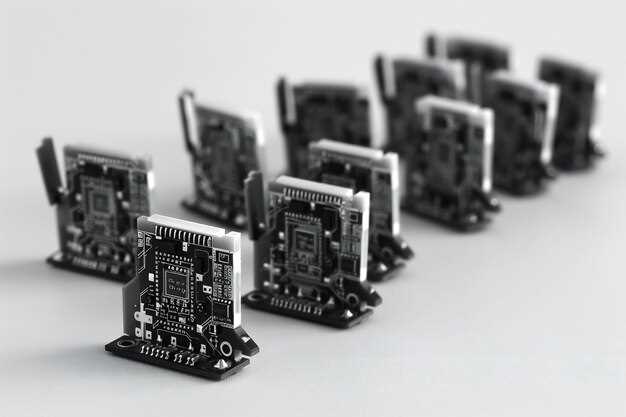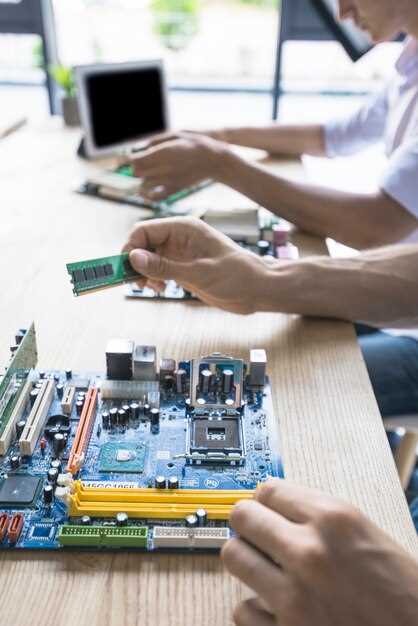
In the world of classic car restoration and modification, enthusiasts often seek ways to enhance performance and reliability while preserving the vehicle’s inherent charm. One popular method that has gained traction in recent years is ECU swapping. By replacing the stock engine control unit (ECU) with a modern, more sophisticated version, car owners can access improved tuning options and increased efficiencies, making it a compelling choice for many projects.
Swapping the ECU can lead to significant upgrades in a classic car’s engine management system. Modern ECUs offer advanced features such as better fuel mapping, traction control, and improved emissions controls. With these enhancements, drivers can expect not only a boost in performance but also a smoother driving experience. This is particularly beneficial when trying to integrate an older engine with contemporary technology or when retrofitting a classic vehicle with more modern powertrains.
However, it is essential to weigh the benefits against potential drawbacks. ECU swapping may require significant adjustments to various vehicle systems and could impact the authenticity and resale value of the classic car. Depending on the specific goals and preferences of the car owner, the decision to proceed with an ECU swap should be made carefully, taking into account both the benefits and the implications for the project as a whole.
Improving Performance: How Can ECU Swapping Enhance Classic Car Tuning?

Swapping the Engine Control Unit (ECU) in a classic car can significantly enhance its tuning capabilities, allowing enthusiasts to optimize performance and reliability. Modern ECUs are equipped with advanced software that enables precise control over various engine parameters, such as air-fuel mixture, ignition timing, and throttle response. This level of control was often unavailable in the original systems of vintage vehicles.
One of the primary benefits of ECU swapping is the ability to fine-tune engine performance to meet the specific needs of the driver. By utilizing customizable maps, tuners can optimize the engine’s output based on driving conditions, fuel quality, and personal preferences. This flexibility results in improved throttle response and overall drivability, which can transform the experience of driving a classic car.
Additionally, a modern ECU often supports additional features such as traction control, launch control, and even better fuel efficiency. These enhancements not only improve performance but also contribute to the longevity of the engine by maintaining optimal operating conditions. Furthermore, with better diagnostics available, tuners can easily identify and rectify issues, which can lead to more significant improvements over time.
ECU swapping also opens the door to aftermarket modifications. Whether it’s upgrading turbochargers, enhancing exhaust systems, or optimizing cold air intakes, a modern ECU can adapt to these changes more effectively than older models. This adaptability ensures that every enhancement contributes to overall performance and can be tailored to specific driving styles.
In summary, ECU swapping is a powerful tool for enhancing the tuning potential of classic cars. With the right ECU, car enthusiasts can unlock performance gains, improve reliability, and customize their vehicle to their unique driving preferences.
Cost-Benefit Analysis: What Are the Financial Implications of ECU Swapping?
When considering an ECU swap for classic car projects, one of the primary factors that requires evaluation is the financial implication. The upfront costs involved in purchasing a new or refurbished ECU can vary significantly, ranging from a few hundred to several thousand dollars, depending on the model and features. Besides the initial purchase, it’s essential to factor in additional expenses such as wiring harness modifications, custom programming, and potentially hiring a professional for installation.
An immediate benefit of ECU swapping is often improved performance and fuel efficiency. Modern ECUs can provide more precise control over engine parameters, leading to enhanced power output and lower emissions. This can translate into cost savings over time, especially in fuel consumption. Additionally, improved reliability reduces maintenance costs associated with older systems prone to failure.
On the downside, the process of ECU swapping can incur hidden costs. These may include potential compatibility issues with existing components, which can lead to further upgrades or repairs. Furthermore, an improper installation might result in damage to the engine or other critical systems, leading to additional expenses that can quickly diminish the economic advantages of the swap.
In terms of resale value, a well-executed ECU swap can increase the overall worth of a classic car if the upgrade enhances performance and drivability. Conversely, poorly planned swaps that compromise the car’s original character may deter potential buyers and negatively impact resale value.
Ultimately, conducting a thorough cost-benefit analysis is crucial before deciding to swap the ECU in a classic car. Understanding both the immediate costs and long-term financial implications can help car enthusiasts make informed choices that align with their project goals and budget. Balancing the potential benefits against the risks and expenses involved will ensure a more successful and rewarding classic car experience.
Compatibility Issues: What to Consider When Choosing an ECU for Your Classic Car?

When selecting an ECU (Engine Control Unit) for your classic car, certain compatibility issues must be considered to ensure optimal performance and reliability. One of the primary factors is the engine type. Different engines require specific tuning approaches, so you must choose an ECU designed for your vehicle’s engine configuration and requirements.
Another critical aspect is the communication protocols. Ensure the ECU you select is compatible with your classic car’s wiring harness. Older cars may use different communication standards that modern ECUs do not support, necessitating additional adaptations.
Additionally, evaluate the sensor compatibility. Classic cars may have original sensors that are not compatible with contemporary ECUs. You might need to replace or modify these sensors to establish a functional relationship with your new ECU.
The software support is also essential. Some ECUs offer robust tuning capabilities with software that provides advanced features for performance optimization. Ensure that the applicable software is user-friendly and suitable for your tuning goals.
Furthermore, consider the emission standards. Depending on where you live, your upgraded ECU may need to meet certain environmental regulations. Ensure that the ECU you choose can comply with these standards if necessary.
Lastly, cost and availability should influence your decision. While modern ECUs offer advanced features, they can be more expensive and harder to source. Balance your budget with the performance enhancements you desire.
In summary, examining engine type, communication protocols, sensor compatibility, software support, emission standards, and cost will guide you in selecting an ECU that meets your classic car’s needs effectively.


